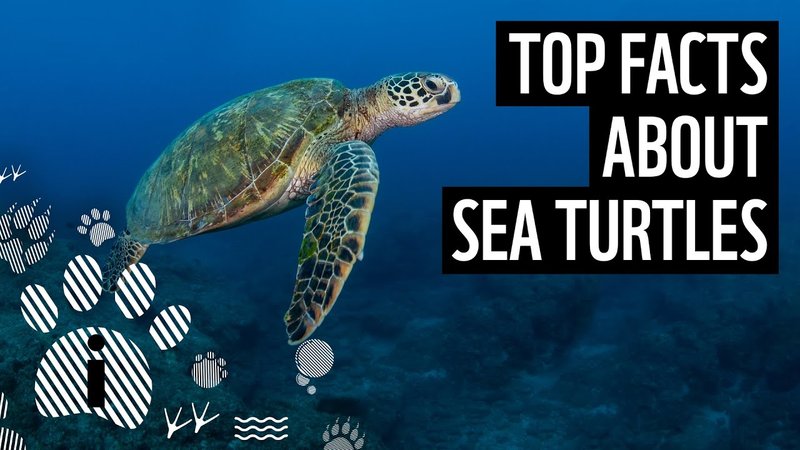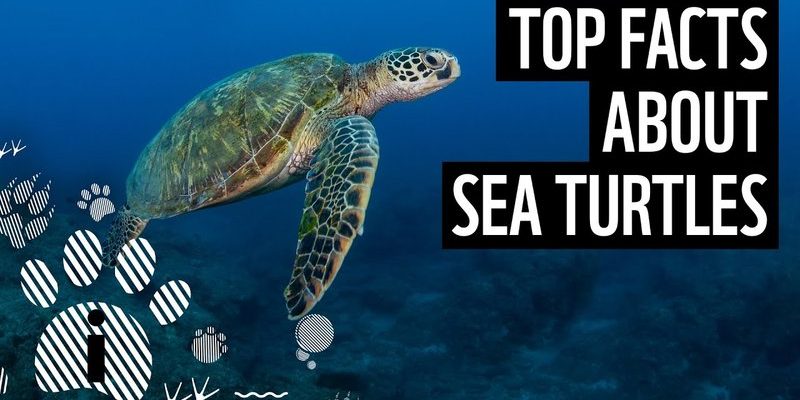
These reptiles are like living fossils, having seen the rise and fall of the dinosaurs, and they play a crucial role in maintaining the health of our oceans. If you’re new to the world of sea turtles, don’t worry—I’m here to guide you through some of the most fascinating facts about them. Get comfy, and let’s dive in!
1. Ancient Creatures with a Long History
Sea turtles have been around for more than 100 million years. That’s right! They were swimming in the seas long before humans walked the Earth. Imagine being in a time where dinosaurs roamed the land while sea turtles glided through the water, untouched by time. Their fossils date back to the Cretaceous period, giving them a fascinating and rich history.
These turtles have survived several mass extinction events, showing remarkable resilience. Their ability to adapt over millions of years demonstrates their importance in marine ecosystems. They have evolved to possess unique features, like their streamlined bodies and flippers, which help them navigate the ocean currents with grace.
2. Amazing Navigators
Have you ever wondered how sea turtles find their way across vast ocean expanses? They are truly remarkable navigators! Sea turtles have an inherent ability to migrate thousands of miles between feeding and nesting grounds. For instance, loggerhead turtles can travel more than 10,000 miles from their feeding grounds in the Atlantic to the beaches of their birth.
So, how do they do it? Research suggests that sea turtles utilize a combination of Earth’s magnetic field and the position of the sun to navigate. They can sense the earth’s magnetic fields using special cells in their brains, which guide them to their destination almost like a built-in GPS. It’s an incredible feat, given that some of these journeys cover vast, uncharted waters.
3. Long Lifespan
Sea turtles aren’t just good at navigating; they’re also incredibly long-lived. Many species can live 50 years or more, with some even reaching over 100 years! This long lifespan is partly due to their slow growth rates. They can take decades to reach maturity, with females returning to nest on the same beaches where they were born.
You might be thinking, “How does that benefit them?” A long life allows sea turtles to reproduce multiple times, which is essential for maintaining their populations. Each nesting season can see a female laying hundreds of eggs, ensuring that even with natural predation and human threats, there are enough hatchlings to continue their species.
4. Diverse Diets
Sea turtles are not one-size-fits-all when it comes to diet. Different species have varying tastes, which helps them adapt to their environments. For example:
- Green turtles primarily eat seagrass and algae, making them herbivores.
- Loggerheads love to munch on jellyfish and crustaceans, putting them in the carnivore category.
- Leatherbacks are unique, feeding almost exclusively on jellyfish.
Their diverse diets play a vital role in keeping marine ecosystems balanced. By grazing on seagrass, green turtles help promote healthy seagrass beds, which serve as important habitats for many marine life forms. Isn’t it fascinating how each type of turtle contributes to the ocean in its own way?
5. Vulnerable to Extinction
Here’s the thing: despite their ancient lineage, sea turtles are now facing serious threats. All seven species of sea turtles are classified as endangered or vulnerable due to various factors, including habitat loss, climate change, and pollution.
Nesting beaches are disappearing due to rising sea levels, while plastic pollution harms their food sources and habitats. When turtles mistake plastic bags for jellyfish, it can lead to severe health issues or even death. Conservation efforts are crucial to protect these magnificent creatures and ensure their survival for future generations.
6. Unique Nesting Habits
Have you ever seen a turtle laying eggs? It’s a sight to behold! Female sea turtles return to the beaches where they were born to lay their eggs, often traveling hundreds or thousands of miles just for this moment. They typically come ashore at night, where they dig a nest in the sand and lay about 50 to 200 eggs, depending on the species.
The temperature of the sand plays a critical role in determining the sex of hatchlings. Warmer temperatures tend to produce more females, while cooler temperatures produce more males. This fascinating phenomenon can lead to potential population imbalances, especially as climate change alters beach environments.
7. Protective Shells
You might picture a turtle and instantly think of its shell, an iconic feature that serves as its armor. But did you know that a turtle’s shell isn’t just for protection? It’s actually a part of its skeleton! The shell is made up of over 50 bones and is crucial for a sea turtle’s survival.
The shell provides protection from predators and environmental hazards, but it also helps regulate their body temperature. Additionally, it allows them to float more efficiently in the water. When you see a turtle basking in the sun, it’s not just soaking up warmth; it’s also helping its shell stay strong and healthy.
8. Social Creatures
While sea turtles are often thought of as solitary animals, they do have social behaviors. They can often be found swimming in groups, especially in areas with abundant food. They communicate through body language and vocalizations, and you might notice them interacting with one another while feeding or resting.
Interestingly, nesting sites can also become social hubs where females gather during nesting season. This creates a vibrant atmosphere filled with activity and can lead to exciting observations of their interactions. Just like humans, sea turtles have social lives, which can be surprisingly dynamic.
9. Conservation Success Stories
Not all is doom and gloom for sea turtles! Thanks to widespread conservation efforts, some populations are showing signs of recovery. For instance, the population of leatherback turtles has increased in certain areas due to nesting site protection and international cooperation.
Organizations around the world are working tirelessly to protect sea turtle habitats, reduce plastic pollution, and create awareness about their plight. Local communities are getting involved, too, helping with beach clean-ups and monitoring nests. These efforts are vital in ensuring that future generations can also marvel at the beauty of sea turtles.
10. Inspiring a Love for the Ocean
Sea turtles capture our hearts with their grace and ancient wisdom. Their journey reminds us of the importance of protecting our oceans and the incredible life forms that inhabit them. Seeing a sea turtle in the wild can be a transformative experience, inspiring a deeper appreciation for marine conservation.
When we protect sea turtles, we’re also safeguarding entire ecosystems that rely on them for balance. Whether it’s through donations to conservation groups, reducing plastic use, or spreading awareness, everyone can play a role in preserving these magnificent creatures and their ocean home.
As we wrap up this deep dive into the fascinating world of sea turtles, I hope you feel a little more connected to these incredible creatures. They embody resilience, adaptability, and the delicate balance of life in our oceans. So, the next time you think about the sea, remember the turtles and the vital role they play in our world. Let’s all do our part to ensure they swim for generations to come!

